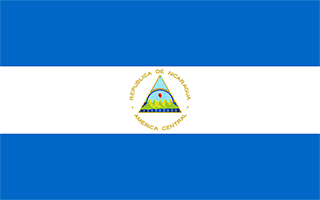Facts and Data
Webpages:
Official Unesco Page
Basis Data:
Unesco World heritage since: 2011
Size of heritage: 0.77 ha
- Buffer zone: 29 ha
Coordinates:
Longitude: -85,122°
Latitude: 12,435°
Summary
Built between 1747 and the early 19th century to the design of Guatemalan architect Diego José de Porres Esquivel, the monument expresses the transition from Baroque to Neoclassical architecture and its style can be considered to be eclectic. The Cathedral is characterized by the sobriety of its interior decoration and the abundance of natural light. The vault of the Sanctuary, however, presents rich ornamentation. The Cathedral houses important works of art including a wooden Flemish altarpiece, and paintings of the 14 stations of the Way of the Cross by Nicaraguan artist Antonio Sarria (late 19th and early 20th centuries).
Location on Map
Show bigger map on Openstreetmap
León Cathedral: A UNESCO World Heritage Site in Nicaragua
Located in the city of León, Nicaragua, the León Cathedral, also known as the Cathedral Basilica of the Assumption of the Blessed Virgin Mary, is a magnificent architectural masterpiece and a UNESCO World Heritage site. This iconic cathedral stands as a testament to the rich history and cultural heritage of Nicaragua.
History
The construction of the León Cathedral began in 1747 and took over a century to complete. The cathedral was built in the Spanish Baroque style, with strong influences from the Plateresque and Gothic architectural traditions. The cathedral's design was the work of several renowned architects, including Diego José de Porres Esquivel and Guillermo de Larrazábal.
Throughout its history, the León Cathedral has witnessed significant events that shaped the nation. It served as a symbol of resistance during the Nicaraguan Revolution against Spanish colonial rule in the 19th century. The cathedral also played a crucial role in the fight against the Somoza dictatorship in the 20th century, providing sanctuary to political dissidents and hosting important meetings.
Architecture
The León Cathedral is a true architectural marvel, blending various styles and influences. Its façade features intricate carvings and sculptures, showcasing the skill and craftsmanship of the artisans involved in its construction. The cathedral's interior is equally impressive, with soaring vaulted ceilings, ornate altars, and beautiful stained glass windows that bathe the space in a kaleidoscope of colors.
One of the most notable features of the cathedral is its rooftop, which offers breathtaking panoramic views of the city and surrounding landscapes. Visitors can climb to the top of the cathedral and marvel at the stunning vistas, providing a unique perspective on León's history and urban development.
Current State
Despite enduring natural disasters and political unrest, the León Cathedral has managed to survive and retain its grandeur. However, over the years, the cathedral has faced significant challenges due to its location in an earthquake-prone region. Several earthquakes, including the devastating earthquake of 1972, caused severe damage to the structure.
Efforts have been made to restore and preserve the cathedral, ensuring its longevity for future generations. The restoration work has focused on reinforcing the building's structure, repairing damaged elements, and preserving its historical and artistic significance. The León Cathedral continues to serve as an active place of worship, attracting both locals and tourists who come to admire its beauty and experience its spiritual ambiance.
As a UNESCO World Heritage site, the León Cathedral holds immense cultural and historical value. It stands as a symbol of Nicaragua's resilience and the enduring power of faith. The cathedral's architectural splendor and its role in shaping the nation's history make it a must-visit destination for anyone interested in exploring Nicaragua's rich cultural heritage.
